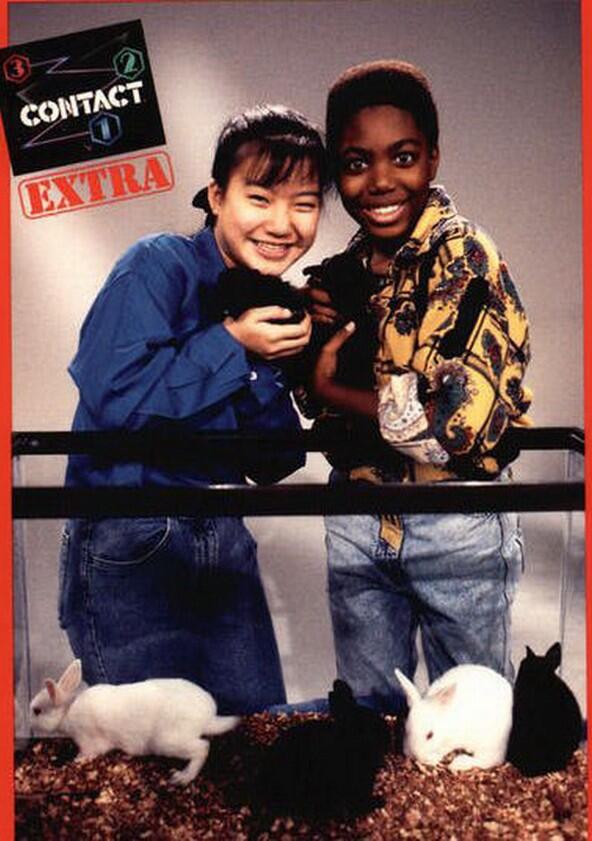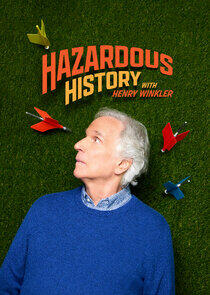3-2-1 Contact - Season 6

Season 6
Network

Episodes30
Datesoct. 12, 1987 - nov. 20, 1987
Episodes

Season 6Episode 130 min
Japan: Precious Oysters, Rare Salamanders
David and Kaori visit the Mikimoto Pearl Farm and see the 100-year process of culturing pearls. David and Kanae Nishio go wading in a forest stream, hunting for a giant salamander. This information supplied by Chuck N. Thank you, Chuck.
oct. 12, 1987

Season 6Episode 230 min
Japan: Landslide!
Impeding Japanese throughout is the erosion of Mmighty .t Fuji. David sees what steps are being guarded to help the Japanese society in spite of it. Included is a building where rainstorms and landslides are simulated.
oct. 13, 1987

Season 6Episode 330 min
Japan: Paper and Kites
David and Kaori visit the Furutas, whose family has been making paper by hand for two centuries. They follow the Furutas as they make a batch of fine paper. David, Kaori, and Chizuru Ishizaka join a kite expert and test a kite designed to fly in little wind. This information supplied by Chuck N. Thank you, Chuck.
oct. 14, 1987

Season 6Episode 430 min
Japan: Earthquake!
David and Kaori get a glimpse of architects designing buildings that can resist the force of some natural disasters.
oct. 15, 1987

Season 6Episode 530 min
Japan: Judo and Computers
How would you like to write your messages in a strictly-ordered way, knowing that one mistake could change the meaning of your sentence? It can happen in English, but it's easier to write Japanese wrong. David and Kaori visit a software researcher and test out software that is designed to read and identify handwritten Kanji characters. (David puts his skills to the test and fails.) David and Kaori also participate in a grueling judo workout, after which they learn about a computer that helps train judo students. Finally, Kaori shows David the next closest thing Japanese language has to the English alphabet.
oct. 16, 1987

Season 6Episode 630 min
Detectives: Skin and Bone Detectives
Archaeologists are seen trying to demystify the Mayans, Egyptian mummies, and a prehistoric cave where flint was mined.
oct. 19, 1987

Season 6Episode 730 min
Detectives: Tool and Trash Detectives
There are ""archaeologists"" in Arizona that are analyzing modern humans from samples of their trash! It's a far cry from the tools of ancient man, or so you would think.
oct. 20, 1987

Season 6Episode 830 min
Detectives: Wildlife Detectives
This show observes owls in the wild and the ecosystems in a salt marsh.
oct. 21, 1987

Season 6Episode 930 min
Detectives: Dinosaur Detectives
In the centerpiece of this episode, a museum moves a large dinosaur exhibit into place.
oct. 22, 1987

Season 6Episode 1030 min
Detectives: Pattern Detectives
Can you tell a pattern when you see it? A combination of new and recycled material shows all sorts of patterns in nature.
oct. 23, 1987

Season 6Episode 1130 min
Architecture: Raising the Big Top
Basic architecture can be whittled down to beams and a sheet. This is seen through circus tents, the Hubert H. Humphrey Metrodome and other things.
oct. 26, 1987

Season 6Episode 1230 min
Architecture: Home
The frame is vitally important to anything architectural. We see how animals make their perfectly-designed shelters, how the Japanese can join two boards without glue or nails, and find the traditional Kenya home.
oct. 27, 1987

Season 6Episode 1330 min
Architecture: Stack It Up
How do you build the world's largest Gothic cathedral? It all comes down to using marble cut in certain ways. The arch and the buttress are featured in the ongoing construction of the Cathedral of St. John the Divine.
oct. 28, 1987

Season 6Episode 1430 min
Architecture: Made to Fit
There is a branch of architectural science called ergonomics, which states how things are built to fit certain people. David Quinn sees if he can improve the ergonomics of a kitchen.
oct. 29, 1987

Season 6Episode 1530 min
Architecture: Light But Strong
The shape and composition of architectural materials can prove vital for various reasons. The I-beam and the triangle brace are highlighted in this episode.
oct. 30, 1987

Season 6Episode 1630 min
Mammals: Rats and Bats
Hard to believe mice and rats are mammals, as are bats. But this program shows why rodents are classified this way.
nov. 2, 1987

Season 6Episode 1730 min
Mammals: Keeping Warm
Fur and hair are mammals' chief arsenal to stay warm. But what about sea otters?
nov. 3, 1987

Season 6Episode 1830 min
Mammals: Live Birth, Warm Milk
This show witnesses the births of elephant seals and wildebeests. Also seen are young black bears and kangaroos.
nov. 4, 1987

Season 6Episode 1930 min
Mammals at Play
Play is an important part of growing, as we see from watching babboons, chimpanzees, sheep dogs and even kids playing.
nov. 5, 1987

Season 6Episode 2030 min
Big Mammals: The High Cost of Living
There is a price ecosystems pay when big animals are confined. This program shows the elephant, the rhinoceros and the tapir groping with spatial problems.
nov. 6, 1987

Season 6Episode 2130 min
Modeling: Things on Wheels
Models are used to test ideas before they become large-scale. A class of intermediate-school students go through modeling tactics in building a spring-driven car. We also see newsreel clips of models that produced both commonplace items and inventions that didn't pan out.
nov. 9, 1987

Season 6Episode 2230 min
Modeling: Through Ice and Air
Models observed in this episode include those of Canadian ice shields, fast bicycles, and modern airplanes.
nov. 10, 1987

Season 6Episode 2330 min
Modeling: The Earth
Surveyors are seen at work, as are schoolkids who devise a map of their own neighborhood.
nov. 11, 1987

Season 6Episode 2430 min
Modeling: Knees and Small Things
Models are shown in museums and in the medical world.
nov. 12, 1987

Season 6Episode 2530 min
Modeling: Spaces
Much of this program focuses on a zoo's constructing an uncannily accurate rain forest for its animals.
nov. 13, 1987

Season 6Episode 2630 min
In the Air: Finding Your Way
Built largely on material recycled from Season 1, this episode includes insight on how pigeons and bats negotiate their world. Bats rely on sonar, but as for pigeons and how they navigate, that's a different story.
nov. 16, 1987

Season 6Episode 2730 min
In the Air: Drifting with the Wind
Main Concept: Variances in wind currents can be used to create different forms of transportation such as soaring, gliding and hot air balloons. Even inanimate objects like a kite depend on the wind to function properly.
Wind power is introduced with Flying Scooters at an amusement park. Hopey learns about the sport of ""soaring"" by taking a trip in a glider sail plane.
Repeat of a sequence from the episode Hot/Cold: Temperatures on Earth/In Space: In the mountains of Colorado, Lisa participates in a balloon race to better understand why a hot-air balloon rises.
David visits a local Kite Club in Tokyo where he meets a Japanese ""kite doctor,"" who uses science to improve a kite's performance.
nov. 17, 1987

Season 6Episode 2830 min
In the Air: Born to Fly
Jan Carter, Entymologist at the Cincinatti Zoo and Botanical Garden teaches us about the life cycles of the butterfly. David speaks with Glen Wiggins, curator at the Royal Ontario Museum in Toronto Canada, about Dragonflies and their wings and Moths and their Proboscis. Then there's a recycled segment from season 1, Episode 22, where Marc visits a beekeeper. Then back to David and Glen Wiggins about Beetles. This show's information is supplied by Chuck N. Thank you, Chuck.
nov. 18, 1987

Season 6Episode 2930 min
In the Air: Fat Things That Fly
Hopey finds a hibernating ground for ladybugs. David observes beetles at the Royal Ontario Museum. Todd gets fooled by Barbara Reinalda and her softball pitches.REHASHED FROM SEASON 1 (Show 8): Trini takes rides the Goodyear Blimp around New York City.MUSIC VIDEO: Airborne.
nov. 19, 1987

Season 6Episode 3030 min
In the Air: Unbelievable Flying Objects
David visits Aerovironment Inc. where they are building a full scale Pterodactyl model that has been designed based on the few clues scientists have about the real animal. Then David visits Burt Rutan, designer of the Voyager, the first plane to travel around the world without stopping. There David and Burt discuss the custom airplane designs and experimants Burt has made. This information is supplied by Chuck N. Thank you, Chuck.
nov. 20, 1987
Recently Updated Shows
Recently updated shows that might be of your interest.

Last Week Tonight with John Oliver
On Last Week Tonight with John Oliver, John Oliver presents a satirical look at the week in news, politics and current events.
GenreComedy

Resident Alien
Resident Alien is a dark, twisted and comedic fish-out-of-water story that follows a crash-landed alien named Harry who, after taking on the identity of a small-town Colorado doctor, slowly begins to wrestle with the moral dilemma of his secret mission on Earth — ultimately asking the question, "Are human beings worth saving?"
GenreDrama, Comedy, Science-Fiction


